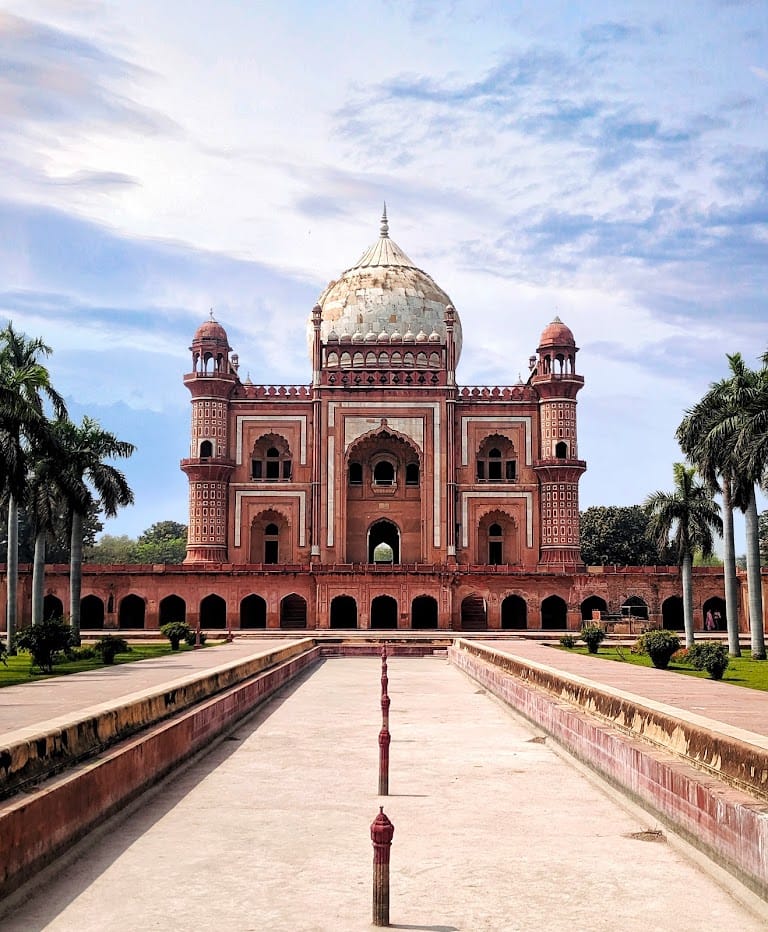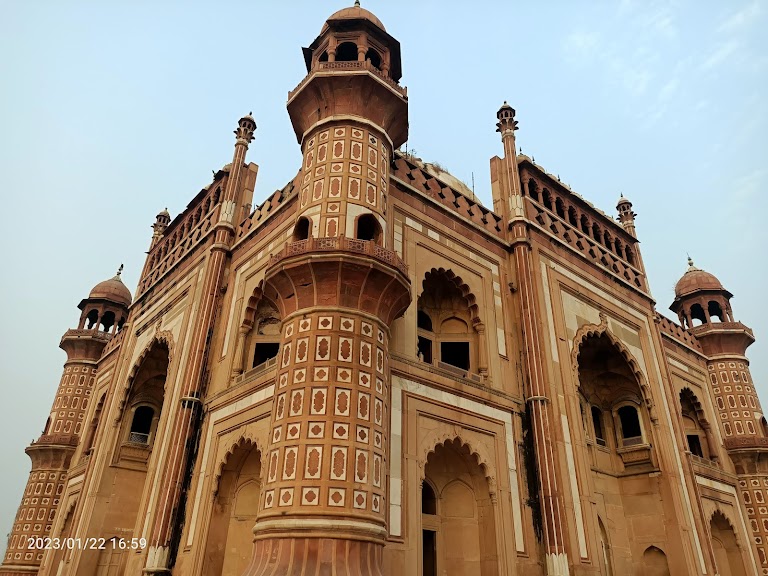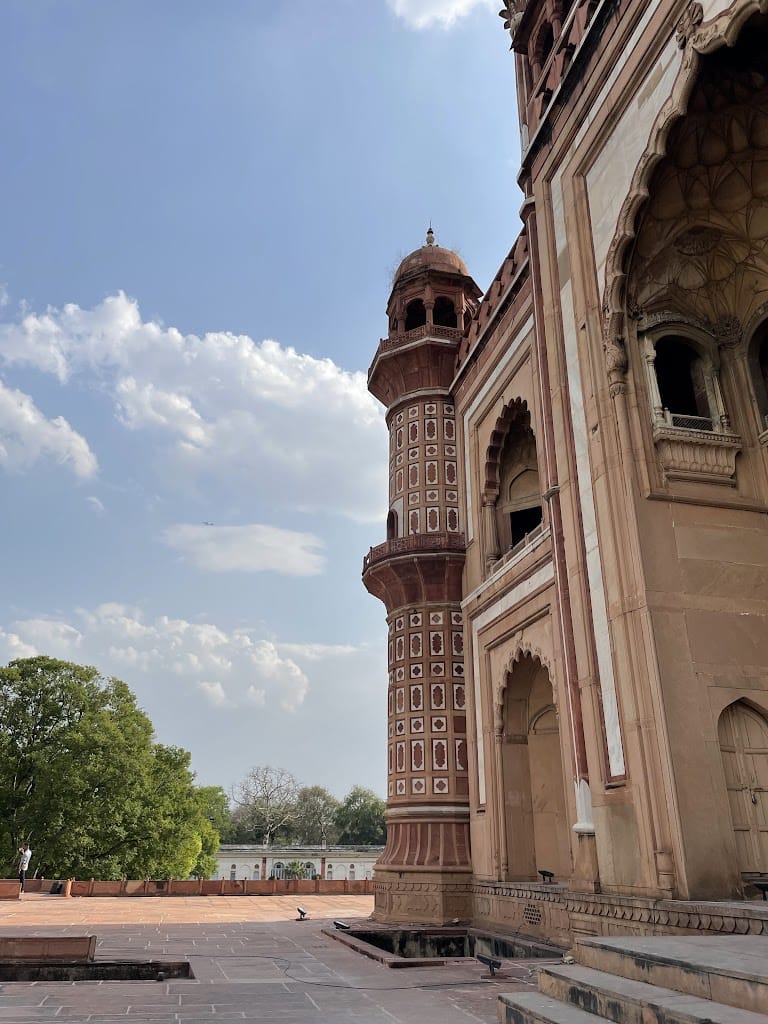


Safdarjung's Tomb is a grand Mughal-era mausoleum located in New Delhi, India. It was built in 1754 for Nawab Safdarjung, the prime minister of the Mughal Empire during the reign of Emperor Ahmad Shah Bahadur. The tomb is an important example of late Mughal architecture and reflects the declining grandeur of the empire at the time. Key Features: Architecture: The tomb is a fusion of Mughal and Persian architectural styles. It is built using red and buff-colored sandstone, with some marble embellishments. The mausoleum itself stands on a raised platform, with an impressive central dome and four minarets at the corners, echoing the style of Humayun's Tomb. Layout: The tomb is part of a large, square garden complex, designed in the charbagh (four-quartered) style, a hallmark of Mughal architecture. The garden is divided into four parts by water channels, symbolizing paradise as described in Islamic tradition. Main Tomb Structure: The tomb chamber contains Safdarjung's grave, surrounded by an octagonal structure with intricate carvings and a large dome. Inside, the tomb has elaborate plaster decorations and beautifully designed arches. Historical Significance: Safdarjung's Tomb is significant as one of the last grand monuments of the Mughal era. Built during a period of decline, its construction shows the diminishing resources and fading architectural finesse of the empire. Additional Structures: The complex also includes a mosque and several pavilions with evocative names like Jangli Mahal (Palace in the Woods), Badshah Pasand (The King's Favorite), and Moti Mahal (Pearl Palace). The tomb, though not as finely detailed as earlier Mughal structures like the Taj Mahal or Humayun’s Tomb, is still an important example of India’s architectural heritage. Today, it is a popular tourist site, offering insight into the final phases of Mughal architecture and history